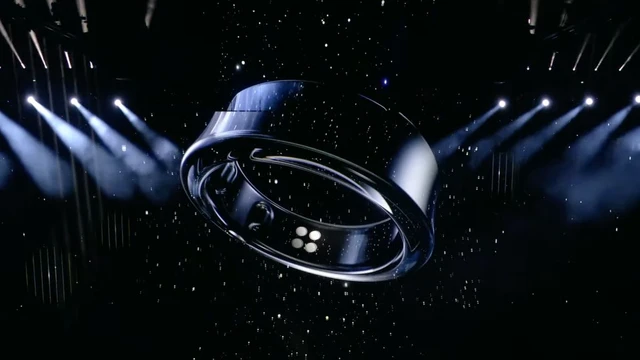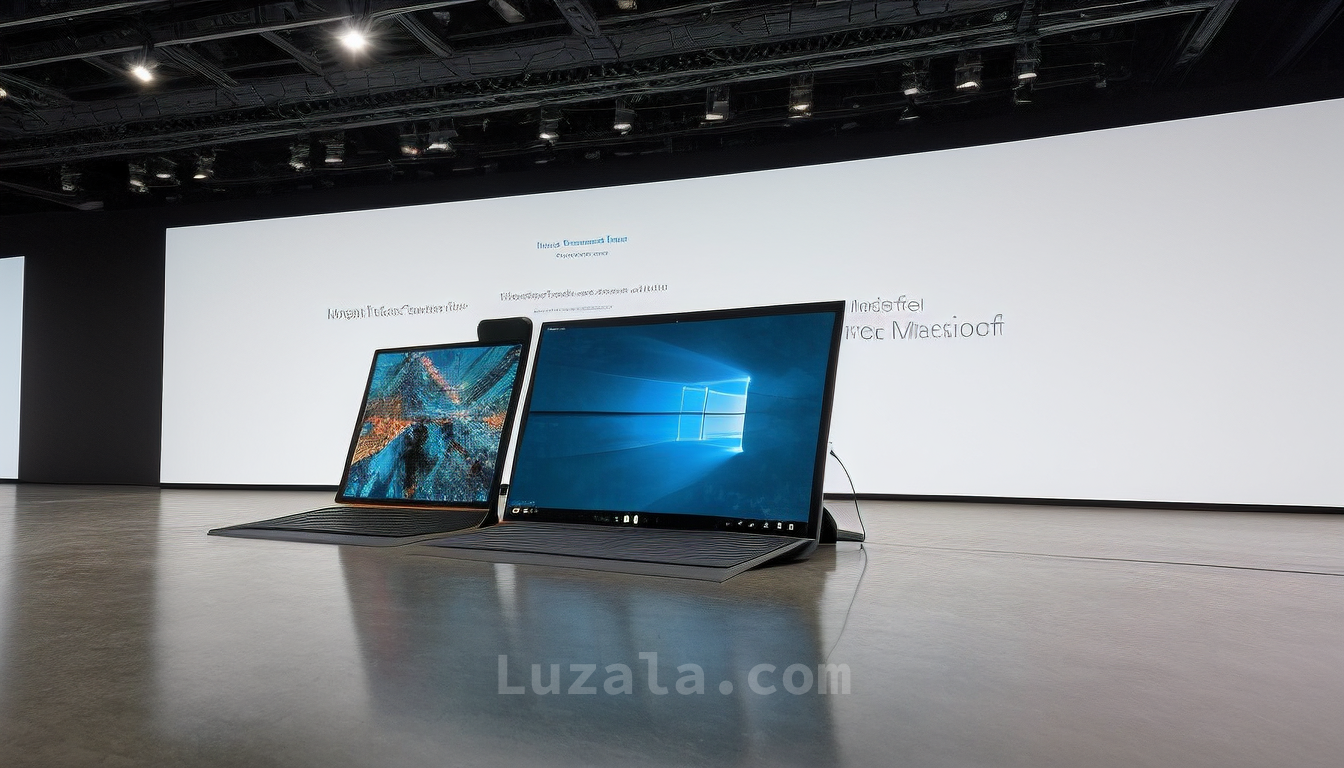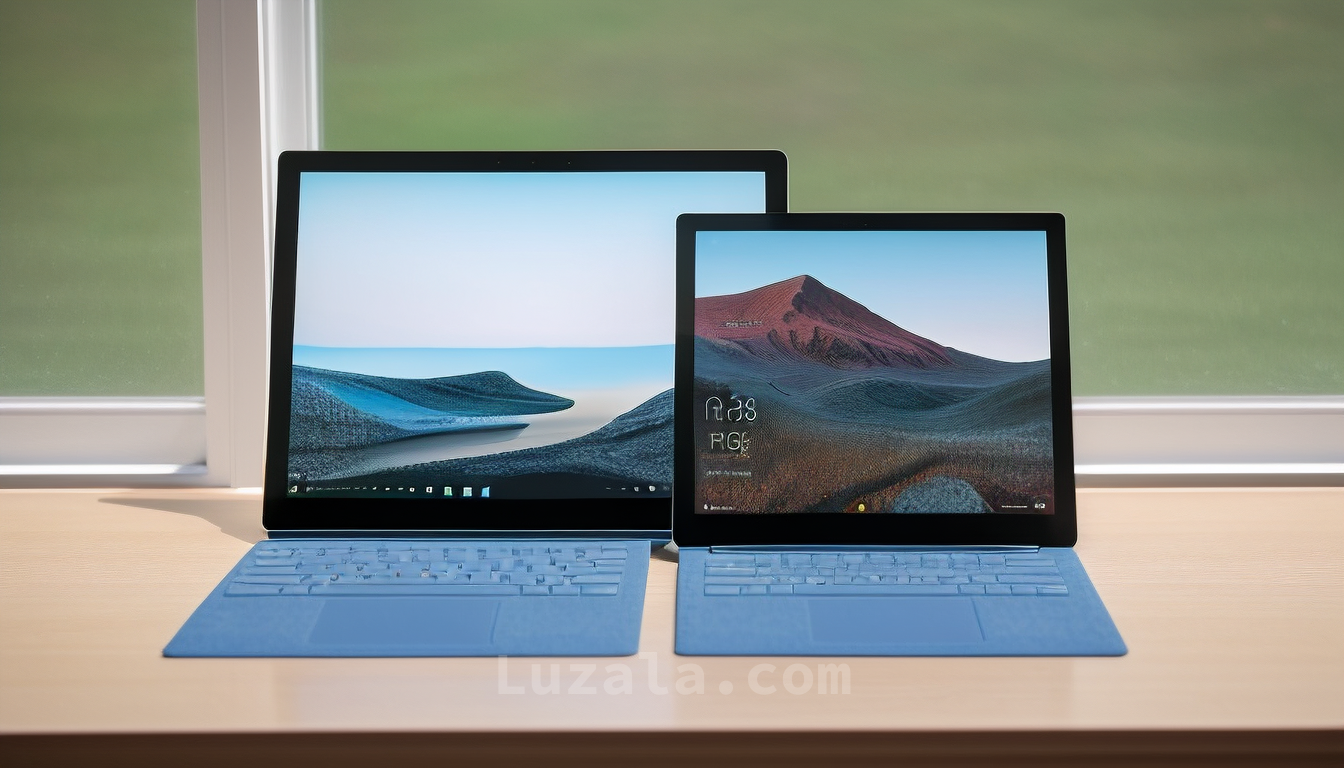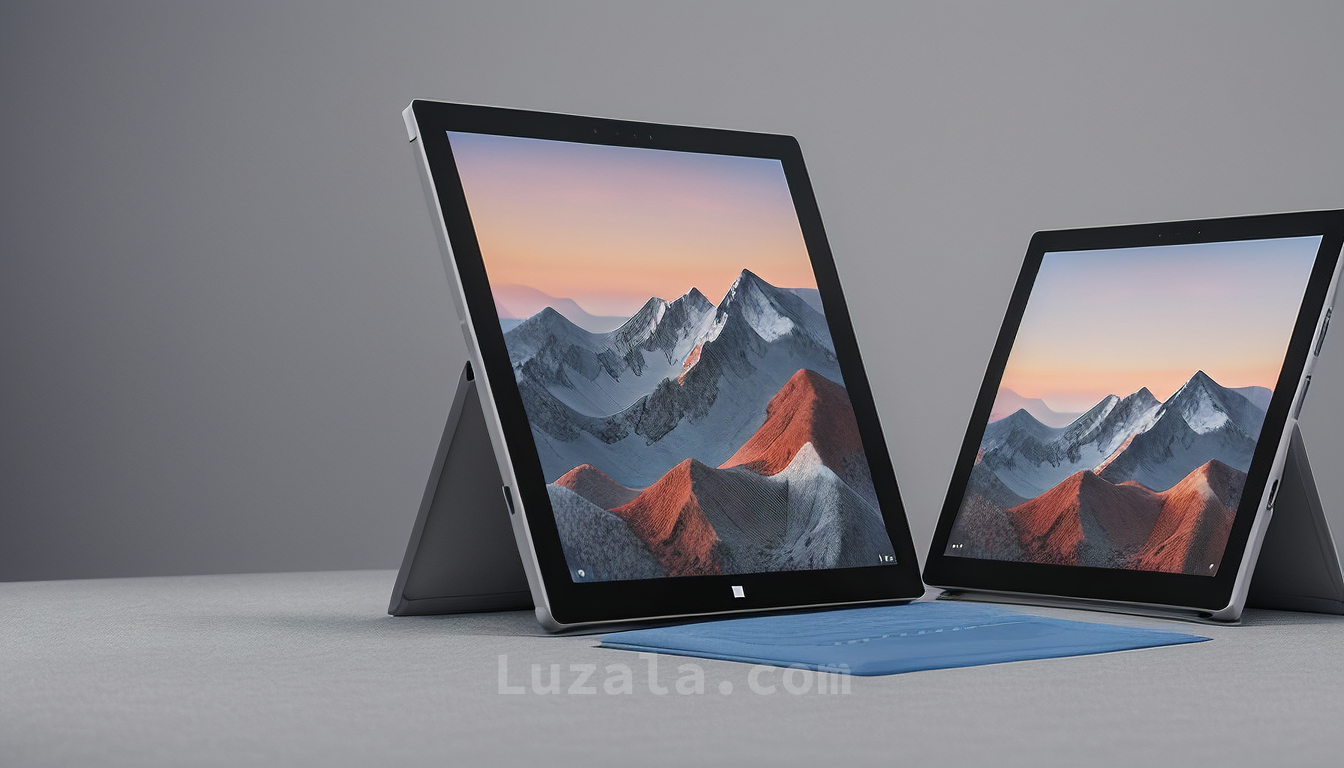Microsoft's Surface Division Faces Uncertainty with Panos Panay's Departure
Microsofts EVP Panos Panays departure sparks questions about the Surface divisions future. Despite recent challenges, Microsoft aims to use Surface as a platform for AI-driven computing experiences.
Microsoft's Recent Leadership Change: Implications and Future Directions
The week kicked off with a surprising announcement that sent ripples through the tech industry: Panos Panay, Microsoft's EVP and chief product officer, was leaving the company. This unexpected departure was revealed through an internal memo, casting a shadow of uncertainty over Microsoft's Surface hardware division, which Panay had been synonymous with for years. However, despite his exit, it's crucial to recognize that Microsoft's commitment to the computing devices business remains unwavering, albeit with a strategic shift towards integrating dedicated processing units and leveraging artificial intelligence (AI) to drive product sales.
In a concise email penned by Rajesh Jha, EVP of Experiences and Devices at Microsoft, employees were informed of the substantial changes ahead for the Windows and Devices department in the wake of Panay's departure. As Panay embarks on a new journey with Amazon, taking charge of the Alexa and Echo division, the tech world is abuzz with speculation about the future of the Surface hardware division, given its recent challenges in development and distribution.
Panay's departure after nearly two decades at Microsoft might seem abrupt, particularly considering the upcoming Surface hardware event in New York, from which he will be notably absent. This sudden change has prompted many to question the Surface division's future, with some speculating that declining revenues and profits could spell its demise. However, a deeper examination reveals several nuances that dispel premature doom and gloom scenarios for the Microsoft Surface business.
First, it's worth noting that while Microsoft's Surface division has faced setbacks in recent quarters, it still contributes approximately 4% of the company's total revenue, translating to around $7 billion in earnings. Additionally, the adoption of Windows 11 has faced initial challenges, with fewer users migrating from Windows 10 in comparison to the transition from Windows 8 to Windows 10 over similar timeframes.
Taking a closer look at the division Panay oversaw, there are crucial factors that should deter skeptics from prematurely dismissing the Surface line. Microsoft recently renewed its partnership with the NFL, extending its commitment to provide Surface hardware and support, now including the Teams communication platform. Yusuf Mehdi, CVP of Modern Life, Search, and Devices, successfully expanded the original 2017 partnership, adding additional services and support—a trend he is likely to continue in his new role.
The NFL partnership has paved the way for Microsoft to secure similar contracts with other prominent sporting leagues such as the NBA, PGA Tour, and La Liga, among others. While commercial sales of Surface hardware have faced headwinds due to the global decline in PC shipments, Microsoft remains dedicated to contracts and partnerships across various sectors, including aviation, hospitality, research, education, legal proceedings, government committees, defense, and retail.
For Microsoft, selling an integrated stack solution encompassing both software and hardware not only increases profit margins but also establishes a foothold within these industries, enabling them to outcompete rivals like Google, Salesforce, and AWS. This comprehensive approach allows Microsoft to bundle Surface Pro devices and support/maintenance programs with multi-billion-dollar Azure deals or vice versa, offering Surface Laptops as gateways to Office 365, Azure, PowerBI, OneNote Classroom, and more.
As a technology journalist, it's essential to balance excitement about new hardware releases with an understanding of a company's strategic objectives. Microsoft's Surface line, while often seen as reference devices, serves as an endpoint solution that aligns with the company's evolving strategic business interests. Over the years, Panay has garnered attention for Microsoft's hardware endeavors, but executives like Mehdi have played a pivotal role in turning devices into viable business opportunities that advance the company's goals.
The original Surface served as a Trojan horse for Windows 8, and over time, Microsoft expanded its portfolio to promote Windows 10S, Windows on ARM (WoA), Windows 11, and an upcoming Windows 12 infused with AI, featuring dedicated Neural processing units integrated into the silicon. Microsoft's heavy investment in AI, including generative pre-trained transformers, conversational machine learning, large language models, and quantum computing, underscores its commitment to infusing these technologies into its platforms to enhance customer experiences and bolster software margins.
Surface devices like the Surface Pro 9, powered by AI-capable chips, offer a compelling selling point, positioning Microsoft at the forefront of AI-enhanced computing. Last year, Microsoft introduced Windows Studio Effects, featuring audio and visual enhancements driven by AI, which represents just the beginning of the company's vision for AI-infused computing.
Microsoft's focus on AI and its desire to embed these technologies into its platforms require a platform for showcasing its Windows 12 AI future, and Surface devices are poised to fulfill this role, even if they don't achieve record-breaking sales numbers. Microsoft's OEM partners have provided similar proprietary solutions, such as Windows Studio Effects, for years, but a coordinated and standardized effort has been lacking. With Surface's commercial success and integration into various business sectors, Microsoft's collaboration with Qualcomm on the Surface Pro 9 may have spurred Intel to accelerate its development of comparable SoC structures.
Having its own first-party devices allows Microsoft to test, compete, and develop specific features for its platforms effectively. Microsoft's OEM partners, collectively selling millions of devices each quarter, benefit from standardization in Windows features and support, enabled by Microsoft's presence in the hardware market.
While Microsoft may not take bold risks like the Surface Duo again, and experimental designs like the Surface Laptop Studio could be the last of their kind, offering polished computers like the Surface Pro and Surface Laptop with competitive performance, AI-infused experiences, and seamless integration into Microsoft's platform ecosystem can still attract businesses seeking dependable solutions. This approach could deter organizations with thousands of seats from opting for Lenovo or Dell, presenting a future that Microsoft can shape and control.
In conclusion, Panos Panay's departure from Microsoft marks an opportunity for the company to redefine the Surface line's narrative to align with its 2023 goals, rather than sticking to the 2013 vision of reference design hardware. In today's landscape, OEMs have surpassed Microsoft in terms of reference devices, specifications, features, and computing experiences, offering diverse options ranging from single-screen foldables to dual-screen convertibles.
Microsoft can pivot by positioning Surface devices as standard-bearers for a refined Windows computing experience, focusing on innovations like haptic keyboards, noise cancellation software, high-quality webcams, on-device encryption, enhanced Windows touch support at the OS level, and more, while steering away from the pursuit of novel device form factors.
While some argue that Microsoft's presence in the market is redundant due to capable offerings from OEMs, the company has worked diligently over the past decade to establish Surface as an aspirational brand. By delivering polished computing experiences with AI integration, Microsoft can retain a competitive edge, ensuring that businesses opt for Surface devices over alternatives.
In essence, Panay's departure signifies not the end, but rather a new beginning for Microsoft's Surface division, one that promises to leverage AI and innovation to maintain a strong presence in the ever-evolving tech landscape.
Download your fonts:
Chunky Cheese Font - Free Download
HBM Penultimate Font - Free Download
zai Drukarnia Akademii Krakowskiej 1674 Font - Free Download
Pain Explosion Font - Free Download
Bare Bones Font - Free Download
Falconers Font - Free Download
The Eighteenth Amendment Font - Free Download















Comments